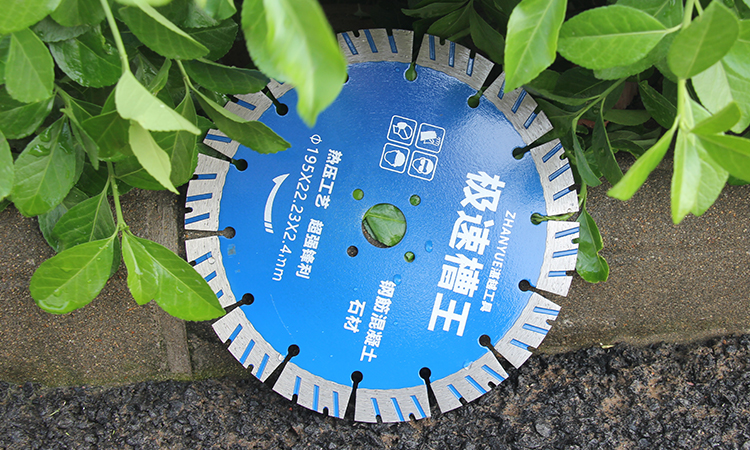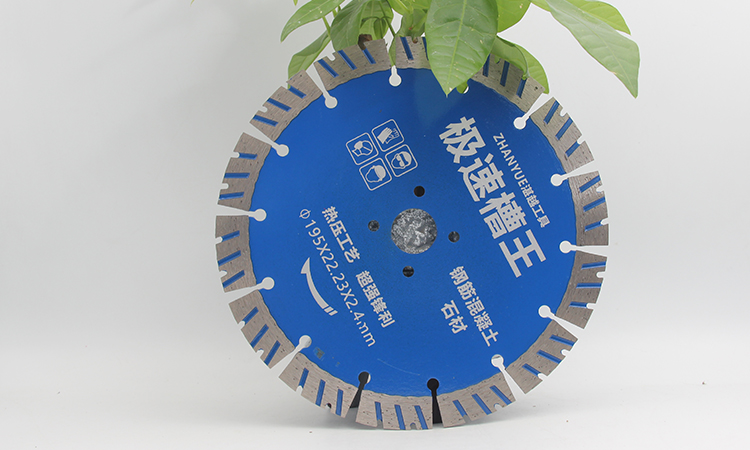- Welcome to, we are a factory specializing in the production and manufacture of saw blades!
- WhatsApp:+8613188737236 | Map
How to Choose a Diamond Blade?
As an efficient cutting tool, diamond blades are widely used in the processing of hard and brittle materials such as concrete, refractory materials, stones, and ceramics. Choosing the right diamond blade is crucial for ensuring cutting efficiency, processing quality, and tool lifespan. Here are some key selection factors and steps.
1. Selection of Diamond Grain Size
The diamond grain size directly affects the sharpness and durability of the blade. When the diamond grain size is coarse and of a single size, the blade is sharp, and the cutting efficiency is high, but the bending strength of the diamond segment decreases, suitable for rapid cutting but not for high durability requirements. When the diamond grain size is fine or a mixture of coarse and fine grains, the blade is more durable but less efficient, suitable for long-term stable cutting. Considering both efficiency and durability, choosing a diamond grain size of 50/60 mesh is advisable.
2. Selection of Diamond Concentration
Diamond concentration refers to the number of diamond particles per unit area. As the diamond concentration increases within a certain range, the sharpness and cutting efficiency of the blade gradually decrease, while the service life gradually increases. However, too high a concentration can cause the blade to dull. Using a low concentration and coarse grain size can improve efficiency, while a lower concentration in the middle layer of a multilayer structure can help prevent blade deflection and improve processing quality.

3. Selection of Diamond Strength
Diamond strength is an important indicator for ensuring cutting performance. Excessively high strength makes the crystals difficult to break, and the abrasive particles are polished during use, reducing sharpness and deteriorating tool performance. Insufficient strength can lead to easy fragmentation under impact, making it difficult to handle cutting tasks. Therefore, choosing diamonds with a strength between 130 and 140N is suitable.
4. Selection of Binder Phase
The performance of the blade depends not only on the diamond but also on the overall performance of the composite material formed by the diamond and the binder. For soft stones like marble, copper-based binders can be used, but copper-based binders have low strength and hardness and high toughness, with low bonding strength with diamonds. Adding tungsten carbide (WC) can improve strength, hardness, and bonding characteristics. The particle size of the main additive should be finer than 200 mesh, and the particle size of the additive should be finer than 300 mesh.
5. Selection of Sintering Process
The sintering process directly affects the densification degree and bending strength of the blade. As the temperature increases and the holding time extends, the bending strength of the blank matrix and diamond segment first increases and then decreases. Choosing appropriate sintering temperatures and holding times, such as sintering at 800°C for 120s, can meet performance requirements.

6. Selection of Binder Matrix
The binder matrix should have good thermal conductivity to ensure that the blade does not soften at high temperatures and can firmly hold the diamond particles. Cobalt-based binders and tungsten-based binders are both good choices. Additionally, the structure of the diamond segment and the design of the substrate are also crucial, with reasonable chip removal and air cooling effects significantly enhancing blade performance.
7. Consideration for Special Applications
For dry-cutting applications, special attention should be paid to the thermal conductivity of the binder matrix and the heat resistance of the diamonds. Surface coating can enhance the heat resistance of the diamonds. Furthermore, the structure of the diamond segment and the design of the substrate should have good chip removal and air cooling effects.
8. Principle of “Matching the Cut”
When selecting diamond blades, the principle of “matching the cut” should be followed, which means that the parameters of the blade (such as diamond quality, grain size, concentration, binder formula, matrix performance, segment structure and size, substrate structure and size, welding, etc.) need to match the hardness, abrasiveness, performance distribution, cutting machine performance, and cutting parameters of the material being cut to achieve the best results.
In summary, choosing the right diamond blade requires comprehensive consideration of factors such as diamond grain size, concentration, strength, binder phase, sintering process, binder matrix, and special applications. By making reasonable selections and matches, the diamond blade can perform optimally during the cutting process, improving cutting efficiency and processing quality.
Zhanyuetool
Shandong Zhan Yue Tools Co.
Site Search
Product Center
Testimonials
Contact Us
© 2025. All Rights Reserved.









